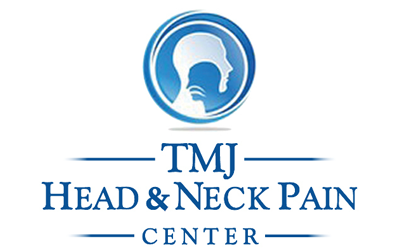- Schedule an Appointment Today
- (310) 231-5100
- drjelisha@gmail.com
Understanding TMJ and Its Treatment Options
How Long Does It Take for TMJ to Go Away?
December 20, 2019What Every Person Living With TMJ/TMD Should Know
December 20, 2019You may have heard friends or family complain of pain in their jaw or face area and say, “I have TMJ.” Well, that is true. In fact, everybody has two TMJ’s. The temporomandibular joint (TMJ) is a hinge joint that connects a part of your skull (temple) to your lower jaw (mandible), allowing you to talk, yawn, chew, and yell for your favorite sports teams. A disorder of this joint is called temporomandibular joint disorder (TMD), and there are over 30 million Americans suffering from this disorder. There are many signs and symptoms of TMD, and it is important for those suffering to have a TMD or TMJ doctor perform a thorough examination to understand the root cause of your condition before prescribing any form of treatment.
TMD or TMJ Causes
The causes of TMD are not widely known. The one common factor is that the muscles and bones in the joint have a direct correlation to the symptoms experienced by sufferers. However, the most common cause of TMD is an injury to the head, neck, jaw or joint. Although other potential causes, which are just as likely, may include arthritis, grinding or clenching teeth, movement of the disc in the joint or even stress. While it might seem unlikely, TMD can be the result of stress disorders, like anxiety, which cause the muscles in the jaw to tense up.
TMD or TMJ Symptoms and Treatment
TMD is considered a multi-factorial disorder, meaning that there are a number of things that can cause it. This makes determining the exact root cause of someones TMD hard to pinpoint. However, there are many common signs and symptoms of TMD that occur in both women and men. In fact, more women than men report with symptoms. Some of the more common symptoms are headaches, especially in the morning, jaw or facial pain, jaw popping or clicking. Additionally, many suffers experience dizziness, difficulty eating or swallowing, and in severe cases a jaw that is locked or dislocated. Many other signs and symptoms can refer to other areas of the body such as toothaches, eye pain, blurred vision, earaches or ringing, loss of hearing, and or neck/back stiffness.
Often times people search for home remedies in hopes that the TMD symptoms will dissipate naturally, however, most cases stem from an issue that is unlikely to resolve on its own. Dentists are on the front line of defense to complete a thorough examination using diagnostic tools to assess this disorder and determine the best course of treatment. However, not all dentists are expertly trained to manage and treat it. It is common for many dentists to refer their patients to Oral Surgeons for management, and there are certainly instances where surgery is warranted. However, its important to note that most cases can be managed without invasive or surgical procedures.
If surgery is not required, dentists who are well trained in analyzing the way an individual bites together may attempt to balance the biting surfaces of the teeth. This can sometimes involve the use of crowns, replacement of missing teeth, or braces and orthodontics. For some patients, a dentist may determine that clenching or grinding of the teeth is putting and excessive amount of strain on the joint and that a customized oral appliance therapy or a nightguard is the best course of action. Others may benefit from simple physical therapy techniques such as moist heat, massage, and or other muscle manipulation modalities. Additionally, TMD is commonly caused by or agitated by stress and anxiety. In many cases, certain muscle relaxers, antidepressants, or anti-anxiety medications can be used as an adjunct therapy to help reduce stress and ease tension. Typically, the proper management of TMD involves a combination of more than one of these therapies and it is important to have a proper diagnosis before committing to a specific treatment option.
Surgery Options for TMJ
There are some TMD patients who require surgery. Some of the common surgical options for TMD include arthrocentesis, arthroscopy, and open-joint surgery. Arthrocentesis, the least invasive of the three involves removing old fluid from the joint in order to let the body produce its own new, fresh fluid. This option can be performed just under local anesthesia. Arthroscopy and open-joint surgery are more invasive procedures that involve general anesthesia, and typically have longer recovery times. There are certainly situations where surgery can be beneficial to TMD patients, however, it is important to have a proper evaluation before committing to any specific treatment. Here at the TMJ Los Angeles CA , we are experts at evaluating and treating TMD, utilizing a number of treatment modalitites that do not involve surgery.
TMJ Specialist Los Angeles
Dr. Jacob Elisha has over 30 years of experience in the field of dentistry, periodontics, and cutting-edge restorative techniques in Los Angeles, CA. Dr. Jacob Elisha is an authority in on TMJ Disorders. He has successfully treated patients with TMJ disorders in Los Angeles in the past and looks forward to the future.
TMJ Disorders. An award-winning oral maxillofacial surgeon and Los Angeles TMJ specialist, Dr. Jacob Elisha is known for providing among the most effective TMJ treatment Beverly Hills has to offer—improving jaw function and delivering permanent relief from chronic pain.
